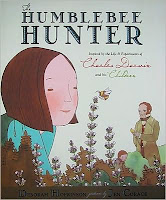 Leviathan, by Scott Westerfeld (Simon Pulse, 2009, YA, 448 pages), was that lovely sort of book which exceeds one's expectations. I knew it would be well-written, I expected, in general, that it would be a good book. I didn't, though, expect to enjoy it as much as I did.
Leviathan, by Scott Westerfeld (Simon Pulse, 2009, YA, 448 pages), was that lovely sort of book which exceeds one's expectations. I knew it would be well-written, I expected, in general, that it would be a good book. I didn't, though, expect to enjoy it as much as I did.I haven't read that much steampunk, mainly because I find complicated machinery and billows of toxic smoke and steam unappealing, and although I know that's a naive view of the genre, but that's what was in my mind. But looking back on Leviathan, the skies were clear, and the machinery unobtrusive, allowing me to enjoy the story...
In a Europe that never was, WW I is beginning. This alternate Europe had split years before into two factions--each taking a different path towards improving the quality of life (and the quality of war as well). The western countries followed the lead of Darwin, mixing and matching bits of life forms to create living technology, and the East went the route of wondrously complex mechanical creations. So in this alternate WWI, Darwinist England's vast living zepplins guarded by bats who poop metal spikes (owie?) are about to face off against Klanker Germany's air craft and huge land machines, great behemoths of steam-driven ingenuity.
As the book begins, two teenagers become caught up in the madness of war. One is Alex, son of the assassinated Archduke Ferdinand, fleeing toward a place of safety where he can ride out the war without being captured by either side. One is Deryn, who disguised herself as a boy to join Britain's air force, and now is a midshipman on the greatest living zepplin of them all--the titular Leviathan.
When the Leviathan crash lands in Switzerland, near where Alex and his guardians have taken refuge, the paths of the two meet, and much excitement ensues. Can the Hapsburg bunch help the British bunch without jeopardizing themselves? Will the Germans come to make sure they finished off the Leviathan? Can the Leviathan be fixed, or are they all stuck in the Alps forever? And what is the mysterious mission the Leviathan was embarked on, carrying Darwin's scientist grand-daughter to the Ottoman empire, with a cargo of precious eggs?
It's great "kids in peril" stuff, with both Alex and Deryn forced to grow-up fast as war becomes a reality for them. Alex, in particular, must cope with an utter re-shuffling of his views of the world and the realities of his life. The technological split between Darwinists and Clankers adds wondrously fascinating detail, the plot is exciting, yet these things never overwhelmed the character arc of the two teenagers and their growing friendship.
Technically this is a YA book, but at this stage of the game (dunno what will happen relationship-wise in the next book--for now Alex and Deryn are still at the just friends but almost certainly about to become more than that) this is a great book for older middle grade kids. The detailed black and white full page illustrations are fascinating in their own right, as well as bringing Westerfield's creations to life. You can see some of them at Westerfield's blog--they are fantastic.
The second book of the series, Behemoth, will be out in October 2010.

























